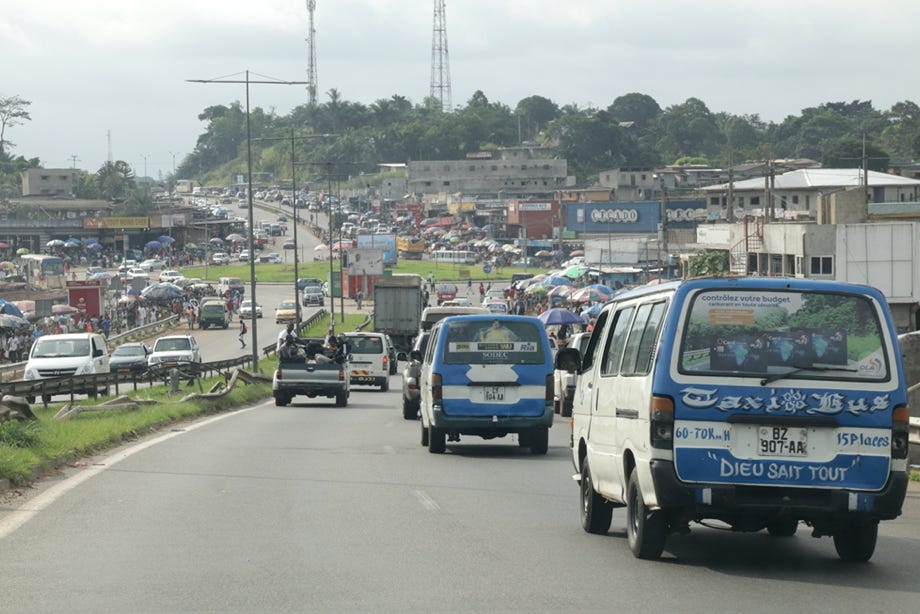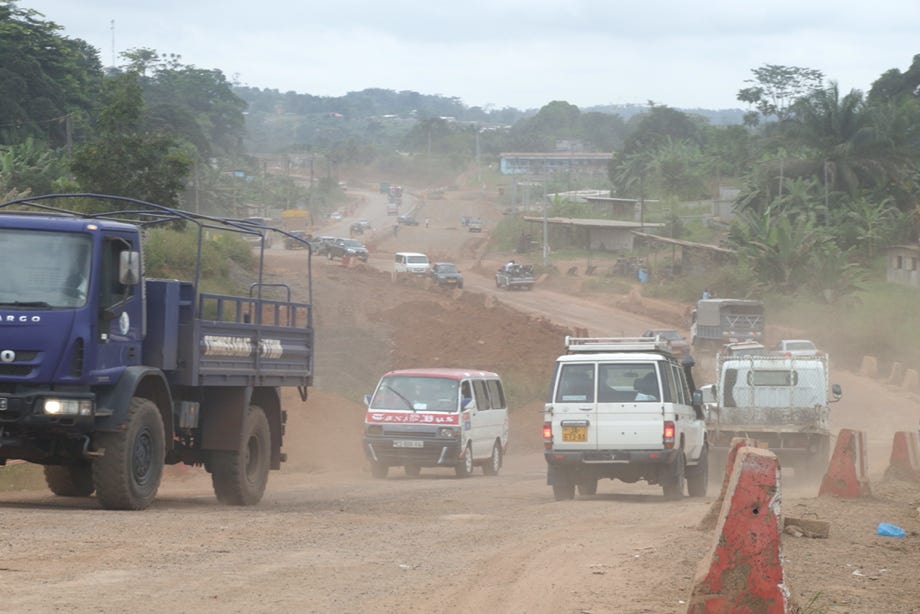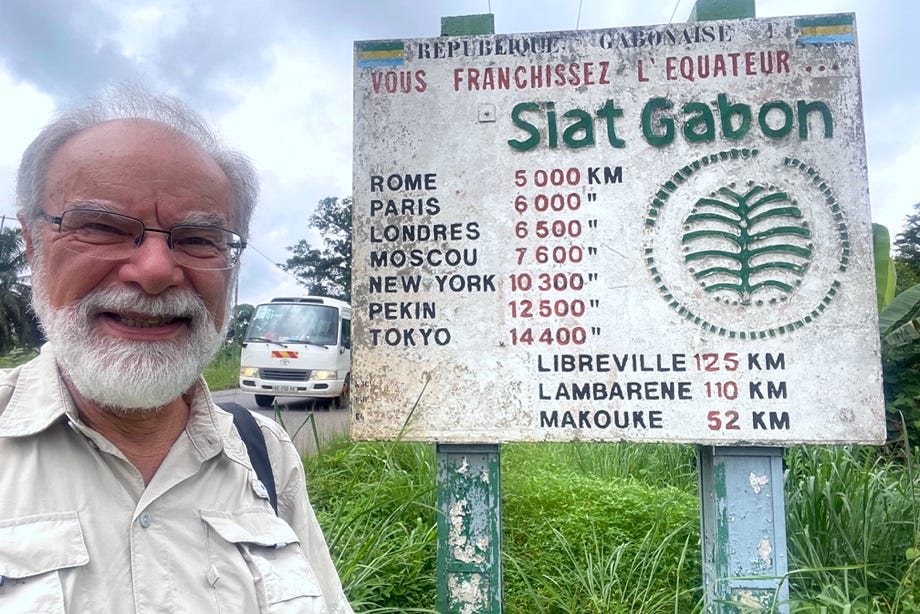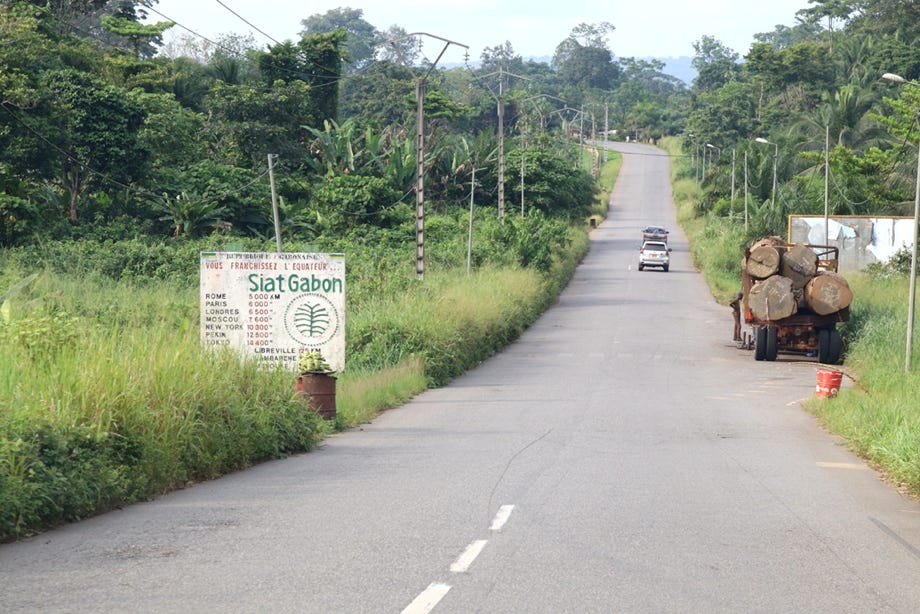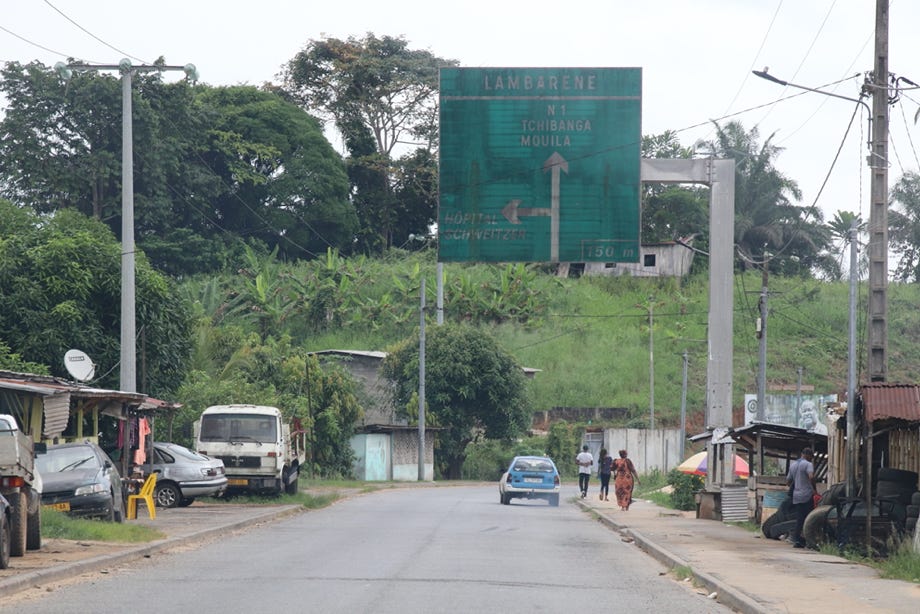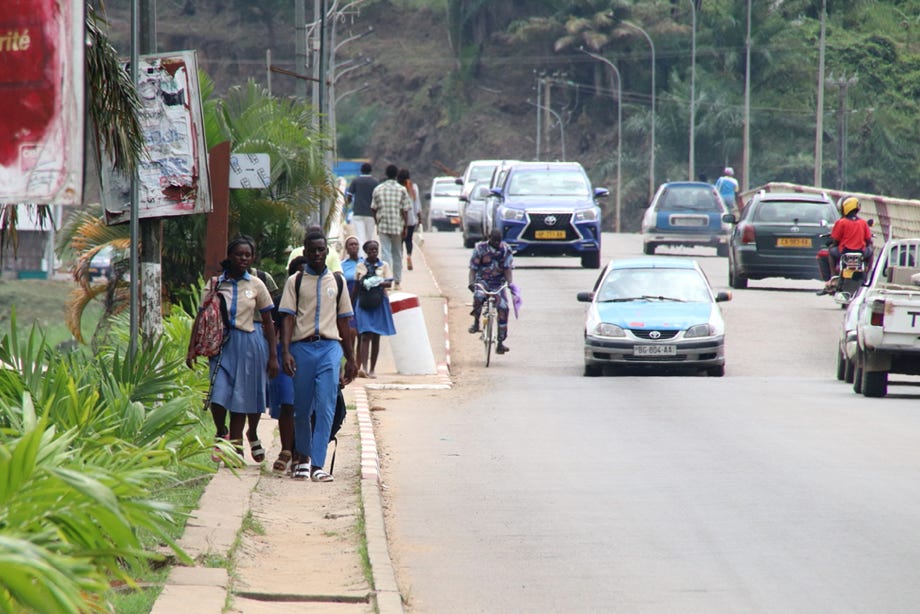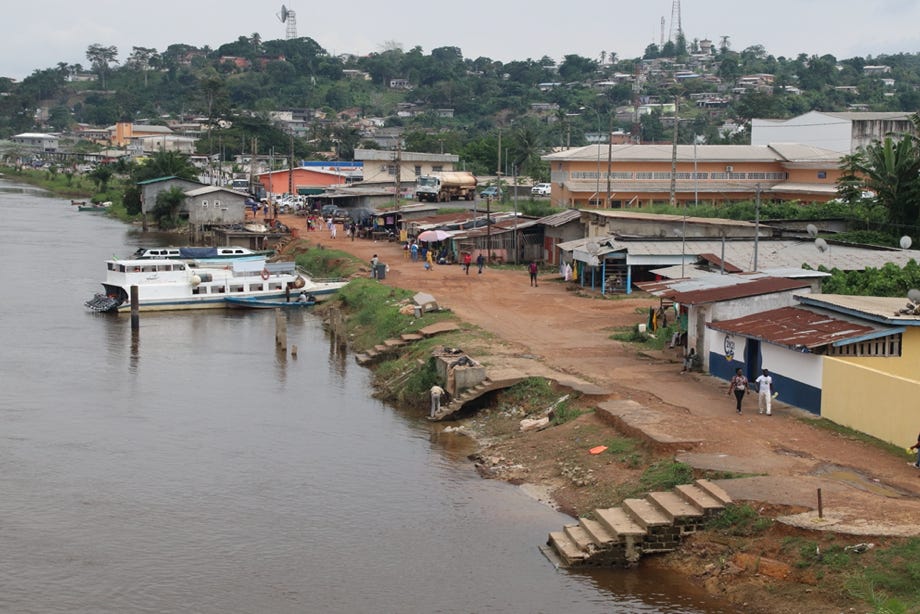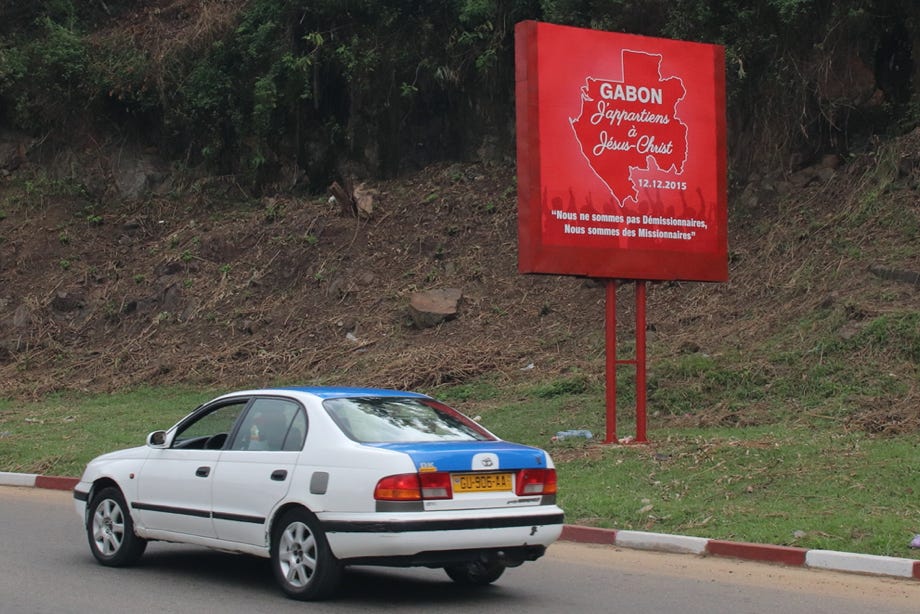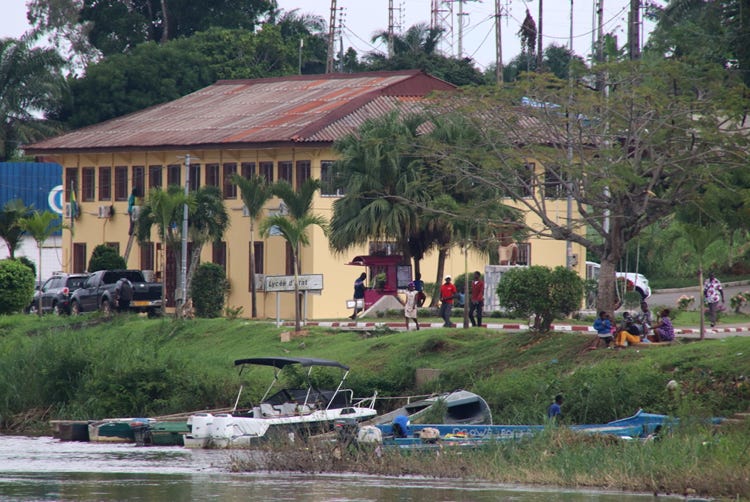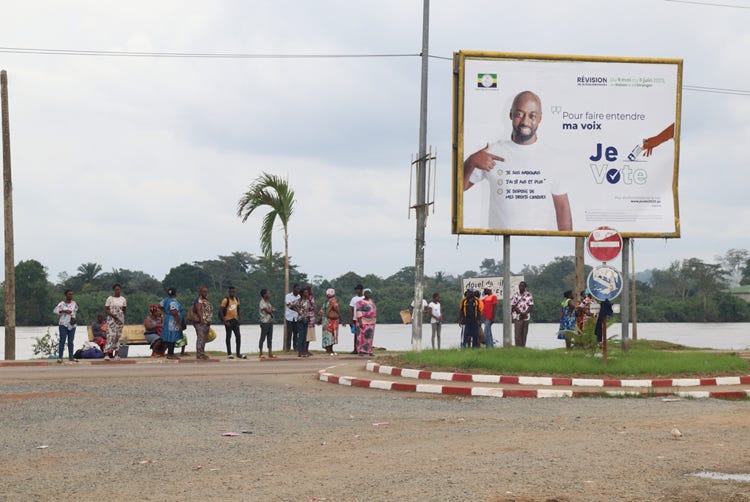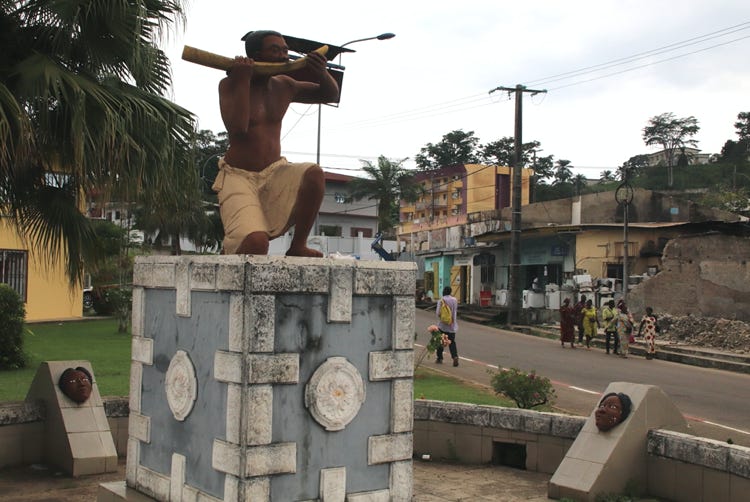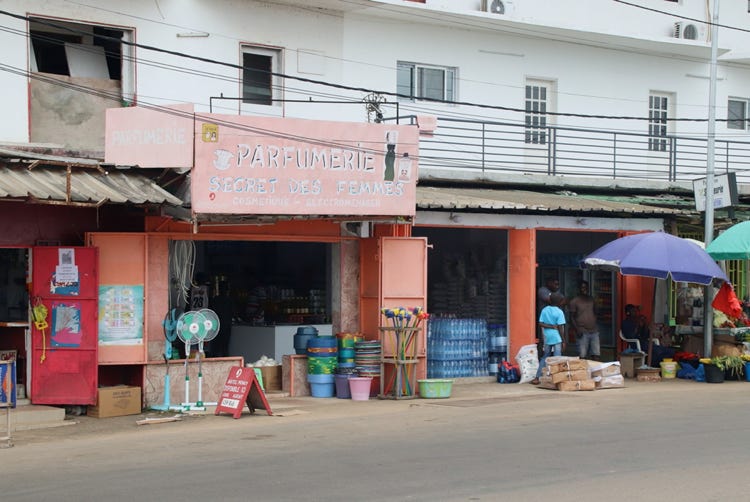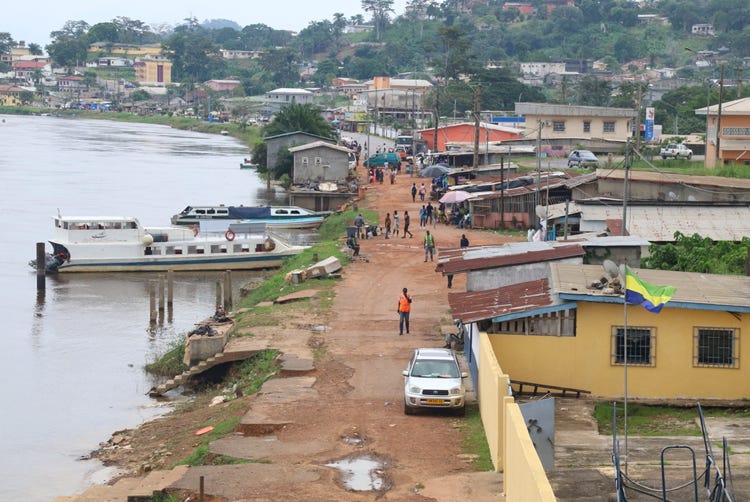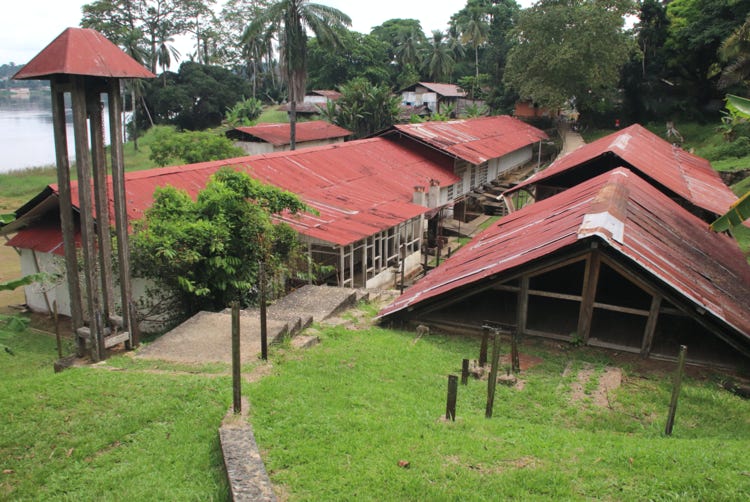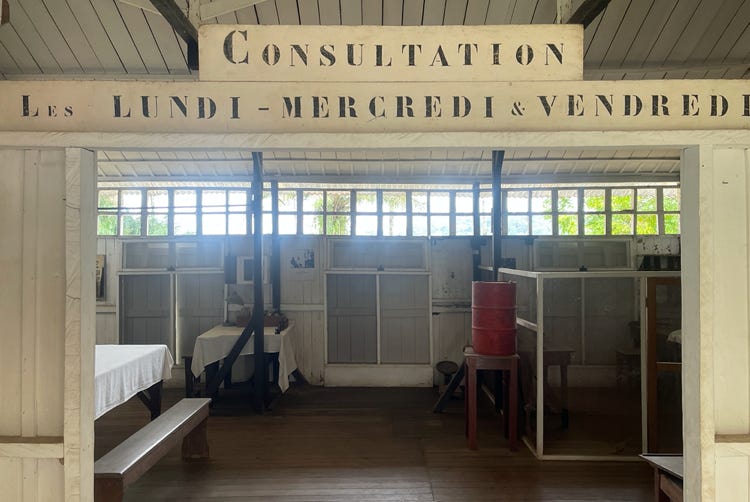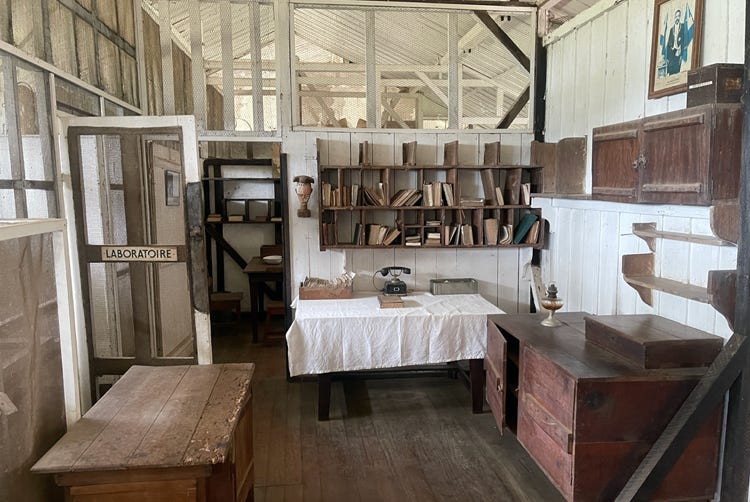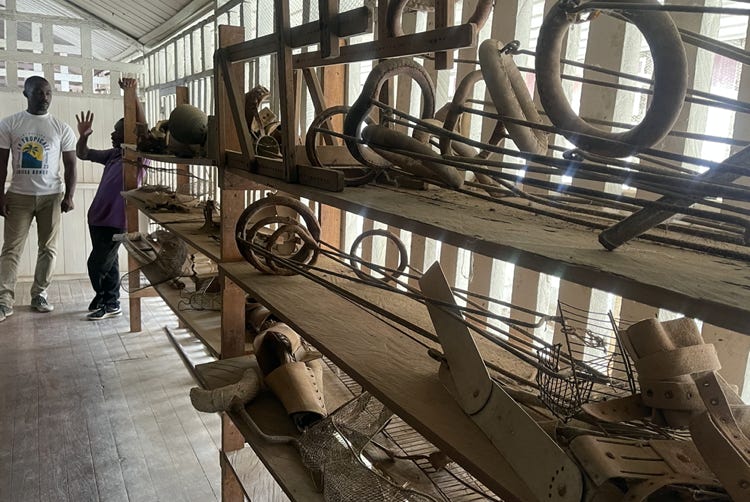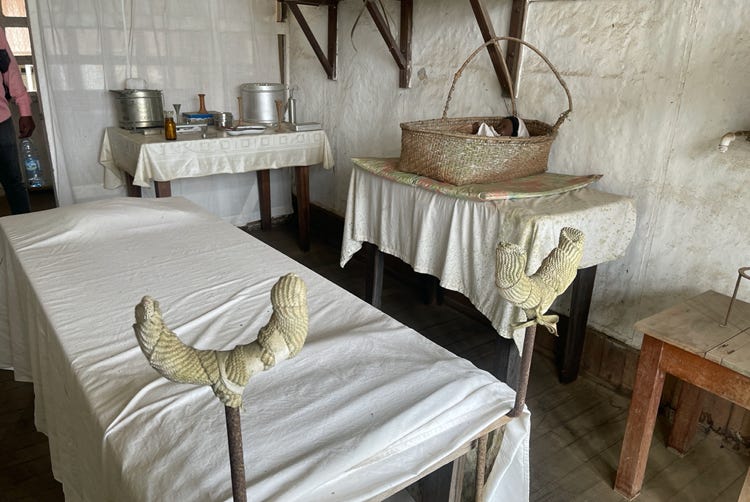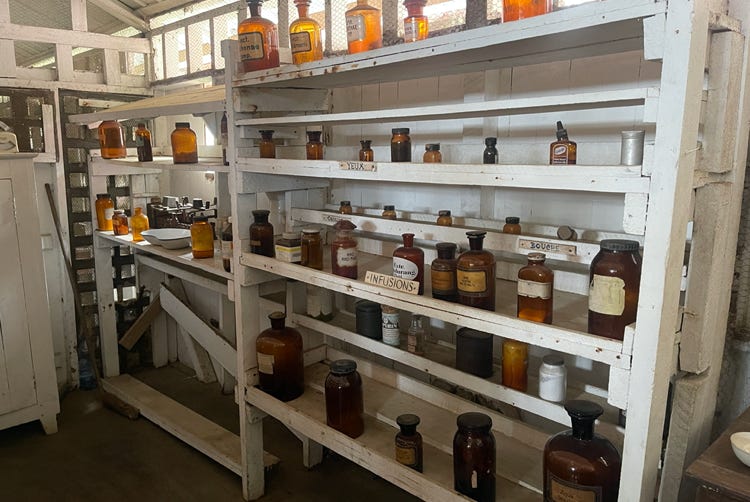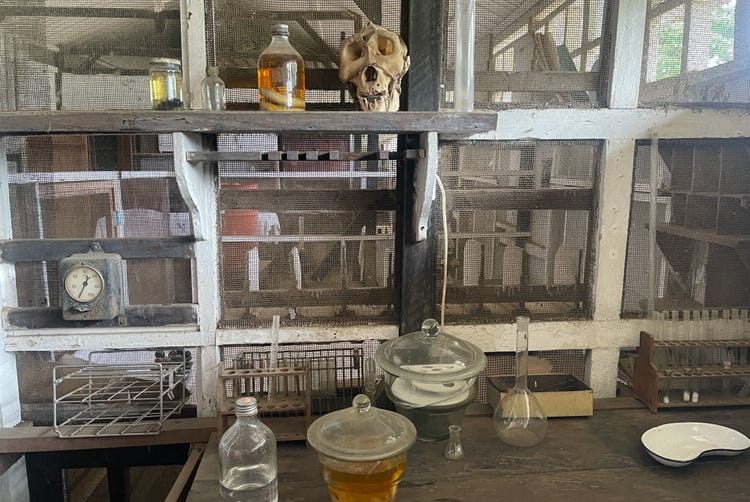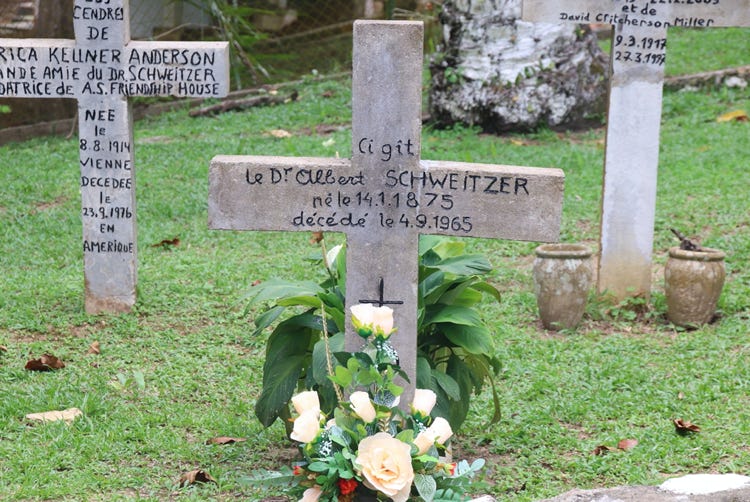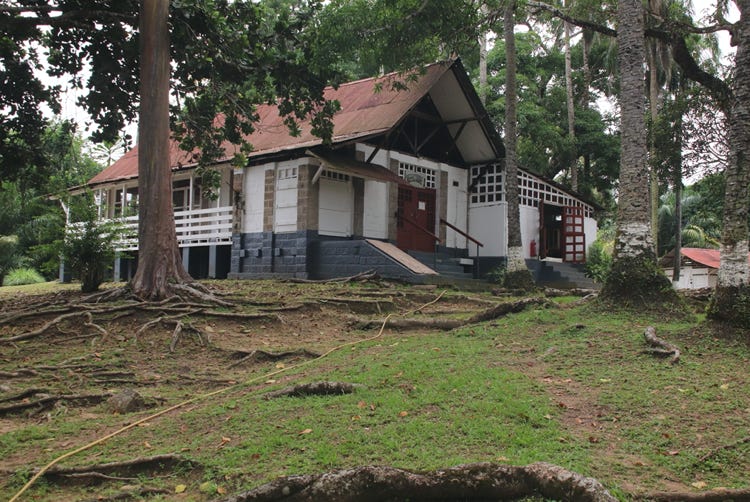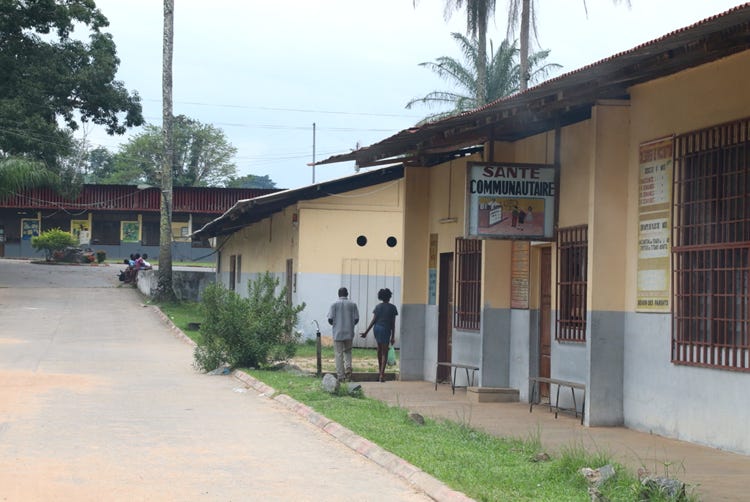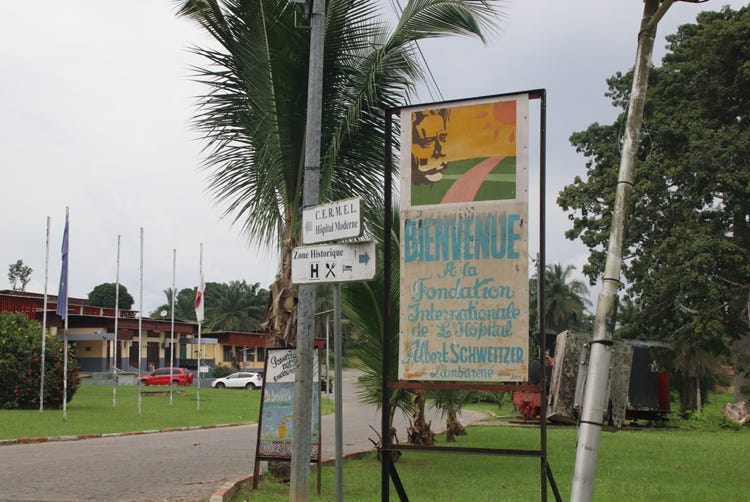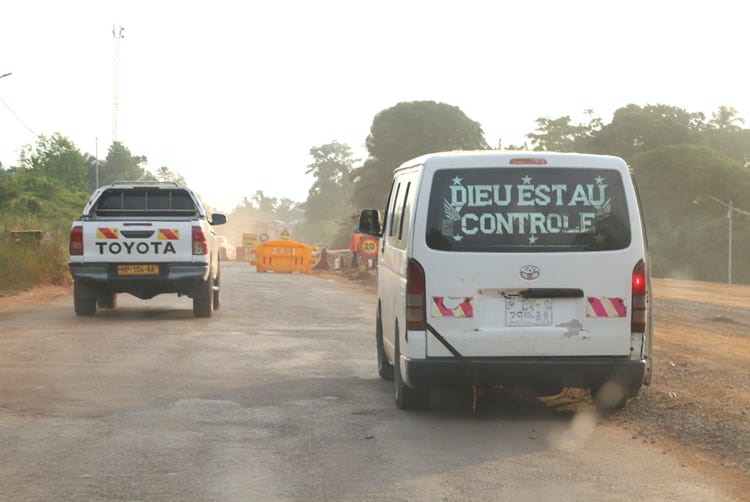
My copy of the Lonely Planet Guide to “The World” devotes just three pages to Gabon (pages 304 to 306). The book describes the eight “top experiences” in Gabon, of which the nation’s capital (Libreville) ranks number 5. The number one ranked “top experience” in Gabon according to the book is Lambaréné, my destination for today.
Although the straight line distance between Libreville and Lambaréné is just 150 kilometres, the distance by road from my hotel in the northern part of Libreville to Lambaréné is 246 kilometres. The follows a somewhat twisty route east from Libreville to Kougouleu, then south-east through Kango to Sifoun, then south-west and south to Lambaréné. Some sections of the road were of high quality while others were peppered with severe potholing, erosion and poorly managed construction work.
I had arranged for my driver from yesterday, Diallo, to undertake the drive to Lambaréné and back, leaving my hotel at 7:30am. Last night he used WhatsApp to tell me that he couldn’t use the same car (a Hyundai sedan) because it didn’t have enough ground clearance and he would need to arrange a 4WD vehicle instead. I reluctantly agreed – reluctantly because it meant an increase in cost of 33%.
I was ready at 7:30am, and at 7:40am I received a message from him on WhatsApp to say the car was at the car wash and he would arrive in 10-15 minutes. A little after 8:00am I received another message to say he would arrive in about 10-15 minutes. This caused me a little anxiety. Then at 8:15am a Mitsubishi Pajero pulled up with a different drive, David, who said he would be taking me to Lambaréné and back. With my limited French I asked David where Diallo was, and was told something along the lines of “he cannot drive you because he is not here”.
We headed off, following the example of other local drivers of avoiding speed humps across the road by driving up onto the footpaths to skirt around them – a very effective way to scatter pedestrians I thought. After about half an hour, we had reached the outer suburbs of Libreville and David started talking in an animated way on the phone (yes, while driving) and after a few minutes pulled up and continued the conversation outside the car. He soon returned to the car and asked me to speak to the English-speaking person from the hotel next door to mine who had arranged the car on my behalf. He apologised that a new driver had turned up, saying he hadn’t expected that would happen and that he hoped it was okay by me. He then asked if I knew that petrol wasn’t included in the quote, to which I explained that was clearly not my understanding and my negotiation of the price (with Diallou) had been on the basis that everything was included. He told me not to worry and that he would negotiate on my behalf.
His negotiation seemed to work, as I heard nothing further about any extra payment for petrol. Another young man suddenly showed up (whose name I never caught), and we set off with him driving the rest of the trip to Lambaréné and back while David sat in the back seat for the entire journey. The drive continued accompanied by loops of recorded MP3 Christian music sung in French in an African style – hits like “J’irais à Cannan” and “Dieu est grand, levons les mains” that I had almost memorised by the end of the day.
We made just one more stop on the way to Lambaréné, but it was a significant one for any geographer. In a rural area approximately mid-way between Libreville and Lambaréné the road crosses the equator. A sign indicates the spot, so it was a relief to stretch my legs and get some selfies before proceeding for the rest of the journey.
We reached Lambaréné at about 12:30pm. Situated on the wide Ogooué River, Lambaréné has a population of about 40,000 people and is split by the river into three quite separate districts; Rive Gauche (the northern part), Ile Lambaréné (the island in the middle of the river) and Rive Droite (the southern part with most of the population). The “Centre Ville” which houses the school, the largest churches and most of the government office buildings is on Ile Lambaréné.
The car stopped in the main shopping street of the Rive Gauche district, and while David and the driver had some lunch, I walked around the town for 1 hour 20 minutes, spending my time roughly equally between Rive Gauche and Ile Lambaréné. The point of visiting Lambaréné was to see the Gabonese countryside, passing through small towns and villages, and then exploring the town itself which Lonely Planet rated as Gabon’s number one “top experience” as a “charming and laid-back town” which is “kinder and gentler than the rest of Gabon” with its “fast-flowing rivers, green foliage and ingrained sweetness”. That was a fair statement; I found the people friendly and relaxed (if a little slow at times to move along the footpath), and the town was quite photogenic – always a ‘plus’ for me.
Lambaréné’s main claim to fame is not actually its foliage or its ingrained sweetness. Lambaréné is the place where the famous missionary physician, Albert Schweitzer, established his hospital on the banks of the Ogooué River in 1913 in what was then French Equatorial Africa. He was 38 at the time, and Albert Schweitzer continued to live and work at the hospital until his death in 1965. Schweitzer’s pioneered much of the early research and treatment into tropical diseases, and the Hôpital Albert Schweitzer continues to operate on the site today as the region’s primary medical care with 150 beds, an emergency room, a pharmacy, a laboratory and an x-ray unit, about 160 staff, two surgeons, two interns and two pediatricians. The hospital is used by about 50,000 people per annum, with HIV/AIDS and tuberculosis being particular emphases.
After my walk around Lambaréné, we drove to the Hôpital Albert Schweitzer to have a look at this site of great pioneering medical and missionary work. I was delighted to find that the original buildings used by Albert Schweitzer have been preserved as a memorial to his work and an elderly disabled local volunteer (French-speaking of course) was delighted to show us through.
This was an unexpectedly fascinating experience as we saw (among other things) Schweitzer’s office, laboratory, library, operating room (with all the gruesome instruments still on display), artificial limb storage, medicine store (with the original bottles), urinary testing facility, dentist’s surgery, maternity delivery room (it looked uncomfortable), nursery, and so on. Our visit finished at the cemetery where Albert Schweitzer is buried along with his wife and a number of esteemed colleagues.
The drive back to Libreville was faster than the drive to get there, and after leaving the Hôpital Albert Schweitzer at 2:40pm we arrived at my hotel in Libreville at 6:45pm – a long day but a really enjoyable one.

